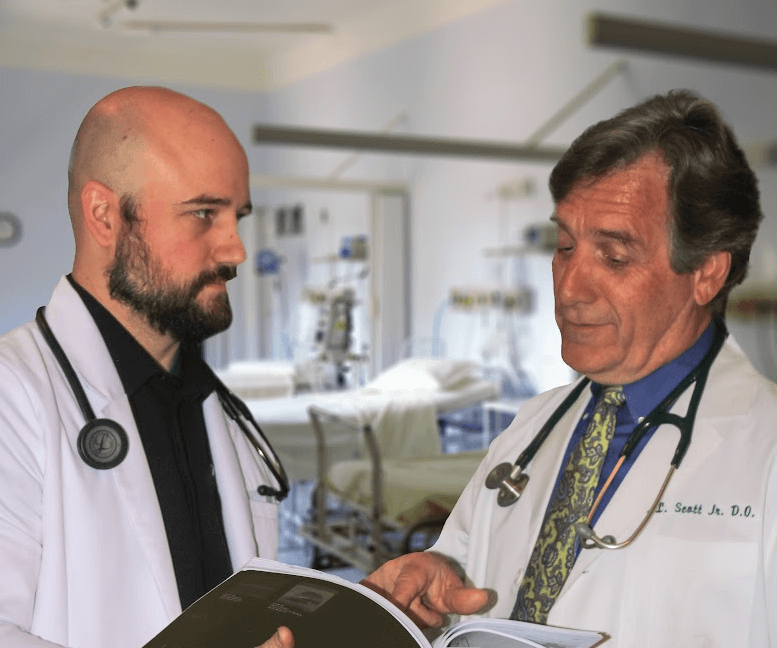Years ago, as a young doctor, my only interest in medicine was taking care of patients. The volume of knowledge to be mastered was so large that concentrating on anything else seemed unimportant.
At the time, I was practicing at a large community hospital that also served as a residency training site for the local university medical school. Most health care institutions cycle through periods of plenty and scarcity. During one particular period of financial struggle for the hospital, I was asked to attend a meeting of administrators and physicians, wherein I gained a better picture of the challenges the hospital was facing.
Financial hardship was hurting every aspect of the hospital’s operation, including its reputation in the community, the effective delivery of health care, the happiness of its employees and the medical staff in general, and, most importantly, the welfare of the patients. As one of the solutions to improving this situation, the administration and the chief medical officer of the hospital were asking certain physicians to take a more active role in troubleshooting issues throughout the hospital. As part of that effort, I was asked to be the “physician liaison” to the heaviest med-surg ward in the hospital.
Suddenly the focus of my practice expanded. Not only was I working hard to further my understanding of human physiology as it relates to disease and acute treatment, but now I was focusing on processes of care delivery, the team aspect of health care, and quality measures including patient and family satisfaction. It turned out to be a great learning experience.
During this time, I met regularly with the nurse supervisor of my ward. Together, we reviewed patient outcomes and troubleshot myriad issues dealing with medication delivery, reporting structures, information technology, and staffing ratios. My responsibilities included talking with families that had complaints about their care, whether it be the cleanliness of the room, the responsiveness of staff, or how a doctor communicated with them. I responded to complaints from other physicians that were unhappy with any aspect of care delivery on the med-surg ward. I was responsible for and often met with nursing staff to assess morale and encourage them during trying times.
Although change did not come quickly, over time, there was a marked improvement, not only in my ward but throughout the hospital. The tide slowly turned as we became an excellent hospital serving a large community. Eventually, the rhetoric in the community reflected the changes we were noticing within the walls of the institution.
That experience was the beginning of a new life-long quest: advocating to have full-time doctors on staff in nursing home facilities. Here are three things I saw then that convinced me of the importance of this relationship.
In-Person Perspectives
Looking back on that experience, I now realize that one reason this program was successful was because those chosen to participate in it were largely hospital-based physicians. As a full-time hospitalist, I was in the ward every day. I rubbed elbows with the nursing staff, and together, we problem-solved for individual patients, often returning to the bedside multiple times in a day until a problem was solved or a patient was stabilized.
Rather than just showing up to a routine meeting to review compiled statistics in a sterile environment and sign off on the paperwork, I was present in the heat of the battle, observing how care was delivered and patients were treated. I became aware of how food trays were delivered, the timing of meals and snacks, whether a floor was polished, and how ancillary services worked with the physician and nursing team. Not only could I review the paperwork on a code, but I was most likely involved in running the code and observing the team’s functions. I got to know the staff better, from custodial support to the unit secretary. As a result, I was able to evaluate individuals’ strengths and weaknesses in real time.
All of these in-person perspectives provided me an opportunity to not only encourage the staff on all levels, but to do some individual teaching as well. Helping staff to understand why doctors made the decisions they did or the importance of certain tests or orders written only helped the team to work more cohesively together. Discussing with nurses why certain tests were ordered, the significance of certain results, and the reasons for certain medications helped the nursing staff to be more engaged in a patient’s care and improved direct dialogue between the doctor, the nurse, and the patient.
Familiarity Breeds Trust
Because part of my role was to deal with complaints at all levels, I often found myself talking to subspecialists about their concerns with quality of care on the floor. As the physician liaison, it allowed me to address those concerns with the staff in a way that was positive and not accusatory. Since they knew I was a part of their team, they were able to take the constructive directions in a better light and were eager to make the suggestions work.
Over time, because staff members knew me so well and worked so closely with me, they began to feel more free to ask questions and express their concerns about issues on the floor. This allowed for troubleshooting to continue in both directions and helped the staff feel supported. Although my analytic skills, honed over years of education in medical school, came into good use in my physician liaison role, I soon realized that I needed to work on my interpersonal skills if I was going to be a good leader.
Most physicians are good at displaying some degree of empathy toward their patients. What is harder to do, however, is to exhibit that same empathy toward the staff. It seems easier to hold them to the same standard to which we hold ourselves and then be critical of a less-than-perfect performance.
Being present and on the team on a daily basis and getting to know all the individuals on the team helped me to understand them better as individuals and allowed me to see them more as colleagues that I needed to support instead of individuals doing a job unrelated to what I was trying to accomplish. Furthermore, their level of comfort with me on the team allowed them to recognize that the advice I gave came from my interest in helping them rather than a criticism of who they were and what they did.
Presence Trumps Stats
As my career later expanded into post-acute and long-term care, I came to realize that part of the problem with the medical director role in nursing homes was the fact that the medical director spent so little time within the walls of the facility. Although the statistics that we sign off on during monthly data-driven quality assurance and performance improvement (QAPI) meetings are important, the missing pieces of the puzzle to better outcomes lie in personally knowing and trusting the team that walks the hallways every day and delivers the bedside care.
Just like on that med-surg ward many years ago, getting to know the team, assessing individuals’ strengths and weaknesses, and being an effective support to improve clinical outcomes requires the medical director to be present on a routine basis within the facility. Taking the time to show interest—not only in your patients but in the staff taking care of your patients—can go a long way to not only improving the level of care but in reducing staff turnover.
Ah, yes, staff turnover in nursing homes. But that is a topic for another day.





